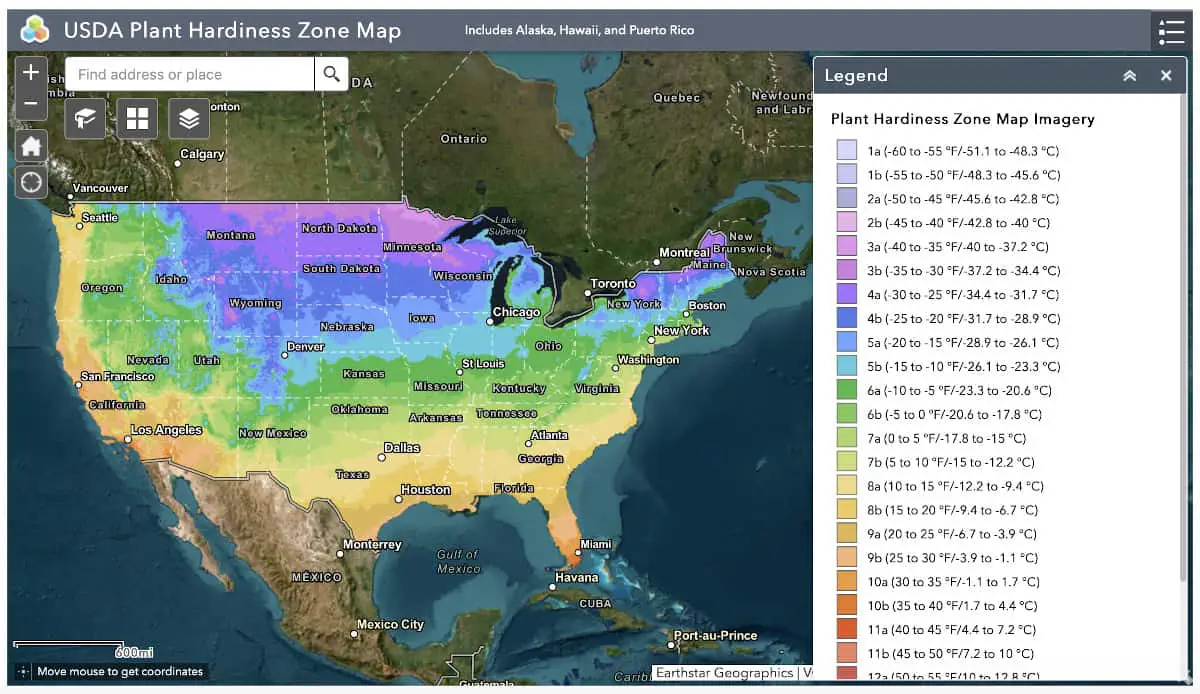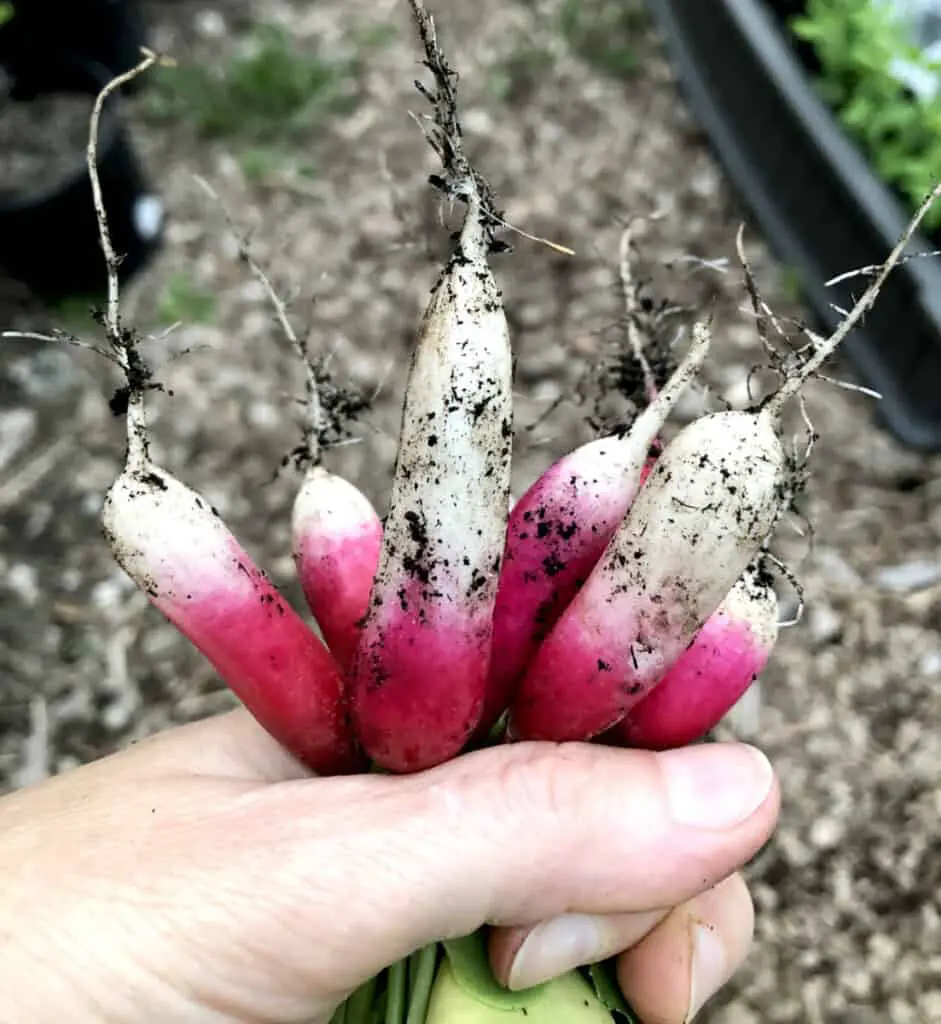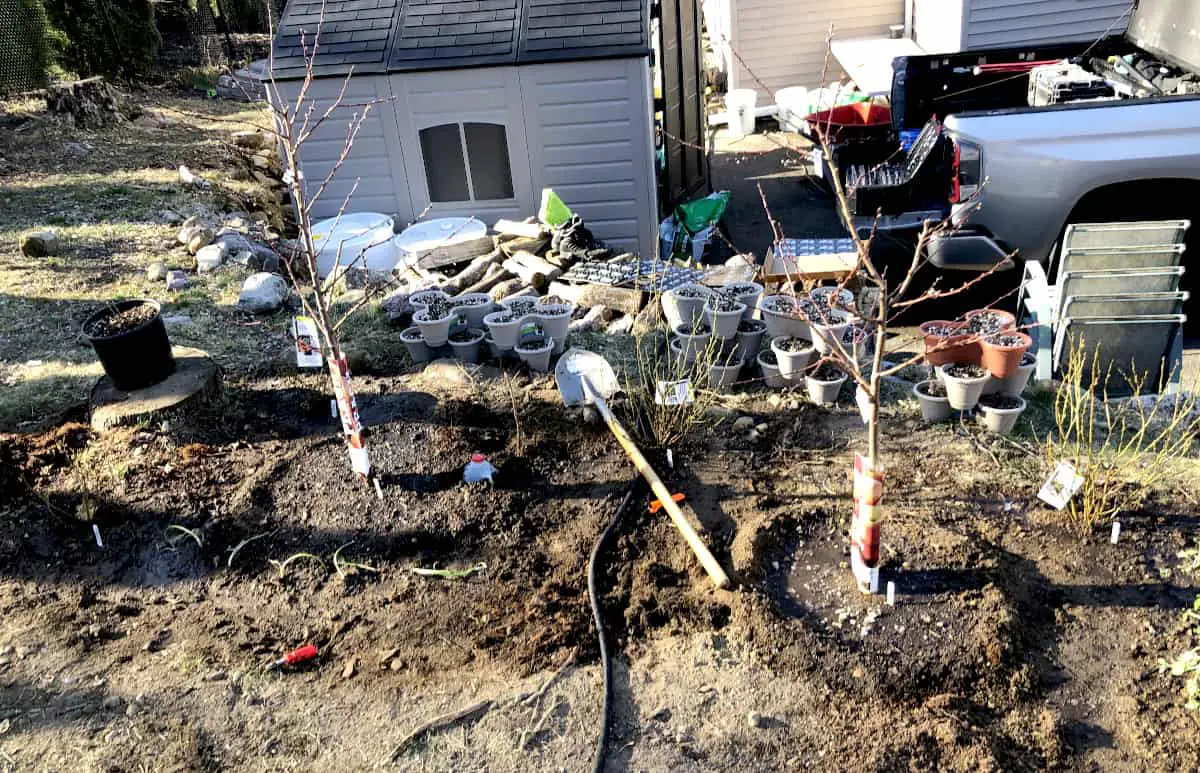One of the most important pieces of information for us gardeners to know is what hardiness zone is our garden located in because it allows us to know what plants will survive, grow and thrive in our outdoor growing space.
A Hardiness zone means a geographic area defined by ten degrees of temperature difference. Each hardiness zone is also divided into A and B segments with 5 degrees of temperature difference. A Hardiness zone is also called a gardening zone, growing zone, or planting zone. To determine your hardiness zone, simply enter your zip code into the USDA Hardiness Zone Map here. The lower the number of the hardiness zone, the cooler the temperatures in that area. The higher the number of the hardiness zone, the higher, and warmer the temperatures in that specific area.

Hardiness zone meaning
Hardiness zone means the average temperature range in your local area, what are the average lowest and average highest temperatures in your zone. By determining your hardiness zone, you will be able to choose plants that are suitable for growing in those temperatures, or hardiness zone.
Why do I have to know my hardiness zone
It is important to know your hardiness zone because knowing your local temperatures will allow you to bring the best out of your garden. Plants are also rated by their hardiness, indicating to you in what temperatures-hardiness they will do best. By choosing plants most suitable for your hardiness zone you are setting up your growing space, yourself, and your garden for a win!

Various plants thrive best in various hardiness zones. It is important to know what plants would do best and which plants will not survive in your specific hardiness zone. For example, the apple tree grows best in zones with winters on the milder side. They will not do well in zones 1 and 2, harsh cold would kill them. Some varieties are hardy enough for zone 3. Apple tree needs enough chill hours for the tree to go into dormancy in order to produce fruit. However very warm zones like 10, 11, and 12, are too warm not providing any chill hours for the apple tree to go to dormancy, and harsh hot weather would kill them.
But tropical plants on the other hand love hot weather and are well suitable for warmer zones without the danger of cold and frost. Fruit trees like guava, or avocado like warm weather and indeed need it in order to thrive. They cannot tolerate cold or frost, it would kill them.
What is the hardiness of a plant or a tree
The Hardiness of a plant or a tree is the ability of the plant or a tree to survive, and withstand cold winter temperatures. All plants have a hardiness zone rating. The higher the number of the hardiness zone, the warmer the winter must be for the plant to survive and thrive. The lower the number of the hardiness zone, the lower temperature can the plant withstand. Still, the hardiness zones for each plant are only guidelines and should be treated as such, not as rules.
There are hardy plants and tender plants. Hardy plants have a higher ability and tolerance to survive cold winters, while tender plants can’t stand light frost. Some plants might be also labeled as heat tender, which means they are sensitive to hot temperatures as well.
What is microclimate
Microclimate is also important to know for your specific location. You and I can both grow in hardiness zone 6, but your microclimate can be very different from my microclimate. For example, both of us can live on the same mountain, but if you live on the south side, the soil in your garden will warm us faster than mine. I might also have l frost that lasts longer than frost in your garden. And perhaps the wind will hit my garden more often and intensively than yours. We both live in the same hardiness zone but deal with different microclimates. I live higher on a mountain and while I have snow in my garden, frozen soil, and my car has ice on top, just about 6 minute’s drive from me neighbors turn their heads in disbelief seeing my frozen car passing by. And later in spring, while 6 minutes from me the trees are blooming, mine are about 2 weeks behind. The same goes for the ripening of fruit like tomatoes and such in my local area.
Microclimate is a local set of atmospheric conditions like temperatures, precipitation, the strength of winds, being located in a valley or on top of a hill, or mountains surrounding you, or being close to large bodies of water. These all influence your local microclimate. Knowing your local microclimate will help you choose the best plants for your garden and yard.
While you can’t change your hardiness zone, you can tweak ways to deal with your microclimate. For example, I know that in my microclimate I am about 2 weeks behind the neighbors that live 6 minutes away from me, just down the mountain. I will therefore have my frost covers ready longer than them, in case light frost falls or surprise flurries appear in my microclimate. I will also wait 2 weeks longer to plant my tomato plants than my neighbor gardeners. I also know that I can plant my cool-weather vegetables longer in succession compared to my neighbors because I am about 2 weeks behind to be hit by warmth.
Microclimate is like a household. We all live in one but each household runs differently. Know your microclimate by observing it and choose plants that will do best in it.
How to choose plants for your hardiness zone and microclimate
There is a right plant for each space. Knowing our hardiness zone and your microclimate will help guide you to choose the right plant for the right space.
When considering perennial trees, bushes, herbs, fruit, and vegetables, we need to consider what perennials will come back year after year, winter after winter. By choosing the right perennials for your hardiness zone you are setting the plants for success. Choose plants that are right for your zone. When buying plants online or at the store, or garden center they are usually marked with their zone range. For example, I bought Heritage red raspberry plants and their hardiness zone was marked for zone 4-8. That means that my zone 6 was within that range, and this raspberry variety should do well in my zone.
Consider also your microclimate, meaning at what spot on your property you will place the certain plants. If you plan to fill a spot that is windy and has no protection, choose plants that will withstand winds, or build wind protection first. If you have a spot in your garden that is shady and frost hits that spot frequently, plant there a hardy plant not a tender one.

Know your growing space and choose the right plant for the space. That goes with edibles or decorative vegetation in your grooving spaces.
Regarding the annual vegetables and fruits, their hardiness doesn’t really matter, because they will go through their whole life cycle in just one growing season and in general will die off before the first frost. For this reason, annuals are usually not marked by hardiness, but instead they are marked with information about how much sun need.
What vegetables to sow in spring in zone 6
What is the easiest food crop to grow?

